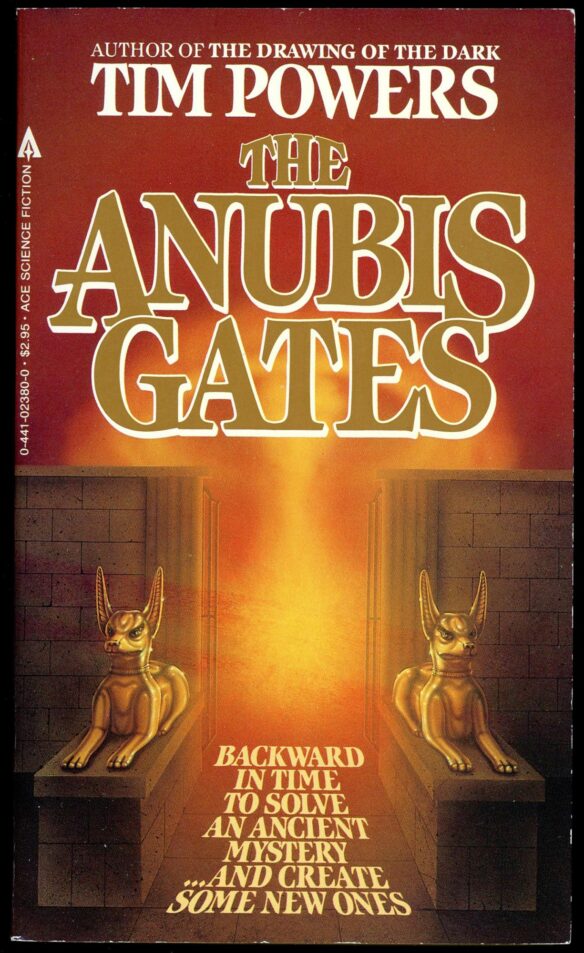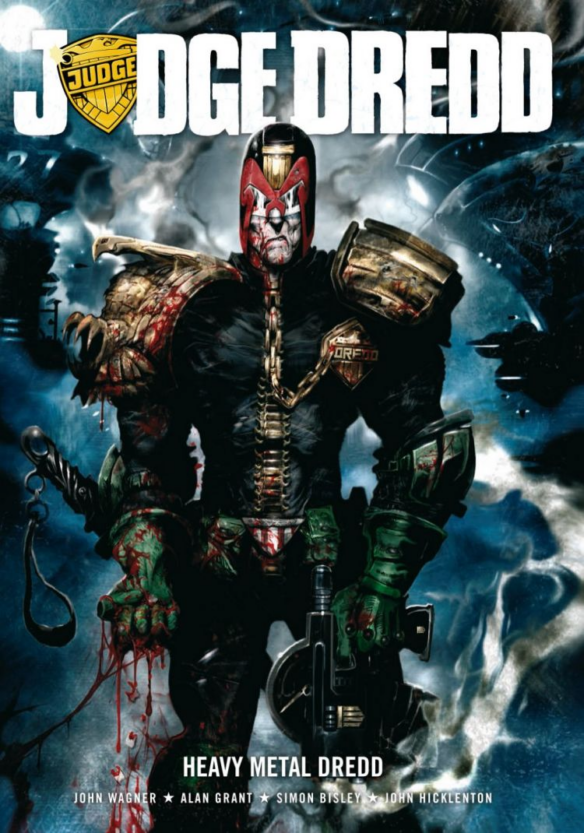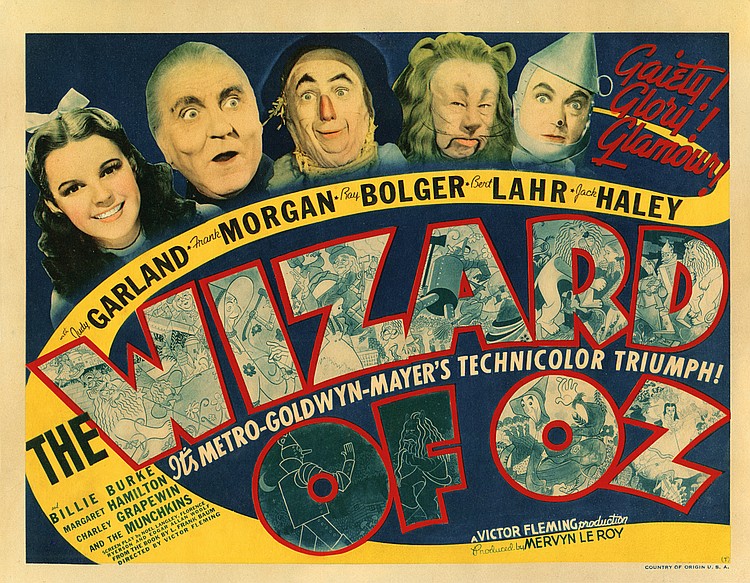(1) CLARION WEST’S EVOLVING WORKSHOP CULTURE REPORT. In 2020 Clarion West began a project to update how they run their workshops, especially the Six-Week Summer Workshop.
With project consultant Rachelle Cruz, Clarion West has finalized a report that covers what spurred this project and the conclusions they reached. S.L. Huang touched on the process in their Tor.com article last summer.
You can read the 90-page report on the Evolving Workshop Culture Project (2020-2022) here.
The Clarion West Writers Workshop was founded on the belief that writers from diverse backgrounds need an opportunity to be heard — and to experiment with new forms of storytelling. Clarion West has historically been successful in reaching women writers and LGBTQIA+ writers, and many of our graduates are actively publishing in the field.
With 744 graduates from the Six-Week Workshop, Clarion West has played a significant role in shaping the careers of speculative fiction writers, and our work continues. As we explore our own efforts to further equity and inclusion, we see an ongoing disparity between the writers we serve and the greater community of published writers in speculative fiction who identify as Black, Indigenous, and People of Color (BIPOC), People of the Global Majority, LGBTQIA+, or disabled. As such, we are now seeking to do better at following our mission to help new and emerging voices in speculative fiction through an examination of our workshop techniques, workshop and organizational culture, community programs, and internal processes.
As a result of feedback and community forums with our alumni described in the report we’ve linked below, Clarion West has undertaken the process of making lasting structural changes that promote a Six-Week Workshop culture distinctive to Clarion West’s mission of equity, empowerment, and innovation — by providing a safer space for participants to explore concepts of race, class, nationality, disability, neurodivergence, gender, and sexual orientation within and beyond the genre of speculative fiction. We hope to expand the focus of this process to every program presented by Clarion West over the next few years.
Clarion West workshop staff and our project consultant and advisor, Rachelle Cruz, created the Overall Report on Evolving Workshop Culture, which details the changes undertaken from 2020–2022. We are excited to share our process, goals, and findings. While this part of the project is complete, we anticipate continuing to update our workshop methods and expectations for students, staff, and instructors each year.
A few findings:
- The role of a workshop facilitator serves as an an advocate for our students and a resource to our instructors. All staff should be trained in workshop facilitation in order to help coach instructors and students in our new workshop models.
- Elements like author statements and author-centered workshop models created excitement and engagement. One participant in testing the Lerman/Huang workshop model said: “I felt excited for a community driven toward building the story toward the author’s intent.”
- Instructors may bring us new models that inspire us! Fonda Lee introduced a model to the 2022 Six-Week Workshop in Week 3 based on Liz Lerman’s Critical Response Process. It proved so successful we continued using it the rest of the summer. A few key elements of this model include giving authors the opportunity to briefly describe their intentions for their work and the feedback they wish to receive, allowing participants to share what they admired about the work and to ask thought-provoking questions, and creating opportunities for full-group discussion.
(2) GUARDIANS OF THE GALAXY CASHING IN. Chris Pratt (Guardians of the Galaxy Vol. 3) squared off against Chris Pratt (The Super Mario Bros. Movie) this past weekend and Chris Pratt won.
The Guardians of the Galaxy Vol. 3 broke the other film’s four-week winning streak at the box office, although The Hollywood Reporter said the domestic opening of $118.4 million is “well behind the last film in the stand-alone Marvel Studios franchise but enough to prove that the new movie is already benefiting from strong audience sentiment.”
And Variety tallied the worldwide receipts:
At the international box office, “Guardians of the Galaxy Vol. 3” added $170 million from 52 markets, bringing its global tally to $289 million. In China, which was once a huge territory for Marvel but has been increasingly hostile toward most Hollywood movies, the comic book threequel collected a better-than-expected $28 million to start.
Meanwhile, The Wrap anticipated The Super Mario Bros. Movie will pass a milestone today:
…On Monday, “The Super Mario Bros. Movie” will pass the $1.15 billion total of “Minions” to become the highest grossing animated movie not produced by Disney or Pixar and one of the Top 5 highest grossing animated movies of all time. The No. 4 spot on that list currently belongs to “Incredibles 2” with $1.24 billion grossed in 2018….
(3) EDIFICE WRECKS. Robin Anne Reid shared the Call for Papers for “Tolkien’s Medievalism in Ruins: The Function of Relics and Ruins in Middle-earth”. Full details at the link.
Many notable scholars have probed the motif of ruins in ancient and medieval texts: Alain Schnapp, Alan Lupack, Geoffrey Ashe, and Richard Barber read the poetics of ruins in Latin poetry, the Exeter Book, and Arthuriana. Scholars working outside of the Classical Age and Middle Ages have also examined how this topos persists in literary periods up through the Renaissance, Romanticism, and to today. In short, the structural and symbolic purposes of ruins in literary texts have a long history, and the literary-critical history of engaging these poetics influences our interests in essays grounded in reading relationships between literary history and relics and ruins in Tolkien’s legendarium. It is time for a volume on the topic, and we are pleased to welcome proposals from a variety of theoretical approaches for a proposed edited collection.
Throughout J. R. R. Tolkien’s history of Middle-earth, relics and ruins appear as images that capture the mood, personality, and disposition of the characters. From the ruins of Erebor and the relics of Gondolin that appear in The Hobbit to the various images of Amon Sûl, Moria, Osgiliath, and post-war Isengard in The Lord of the Rings, Tolkien captures each character’s awareness of the glories of the past and their desires to emulate them. The important roles of relics and ruins in the history of Middle-earth create opportunity for a more formal critical discourse on the topic. This proposed collection of essays will seek to deepen the awareness and importance of relics and ruins in Tolkien’s legendarium while simultaneously focusing on how Tolkien’s vision of history functions within and outside of the Middle Ages. In this vein, we are concerned with including essays that address a greater literary history of Tolkien’s work. We are equally concerned with including pieces that explore the representation of relics or ruins not only within The Hobbit and The Lord of the Rings but, also, the larger legendarium with The History of Middle-earth series, The Silmarillion, and the texts that Christopher Tolkien edited and published after his father’s death (The Children of Húrin, Beren and Lúthien, The Fall of Gondolin, The Fall of Númenor)….
(4) BARD BLOOM (1963-2023). Sff writer Bard Bloom died April 29 at the age of 60 after a three-year struggle with glioblastoma. The family obituary is here.
Bard Bloom passed away at their home in Dobbs Ferry, NY on the morning of April 29, 2023, after a nearly three year struggle with glioblastoma. They were 60 years old.
Bard graduated from Washington University in St. Louis with a degree in mathematics and later earned a PhD in computer science from the Massachusetts Institute of Technology. They began their career as an academic specializing in programming languages and semantics and as a professor of computer science at Cornell University. Later, they became a software engineer with industry giants including IBM, Google, and Spotify.
Bard was a passionate writer of fantasy and science fiction, including the World Tree RPG (together with their wife Vicki) and several published novels, often featuring dragons, both inside the World Tree universe and in other original settings. Bard was also a prolific amateur potter and a skilled gamemaster who facilitated the co-creation of numerous stories with their friends.
Bard was a beloved friend to many and an advocate for their transgender and disabled peers, helping others find community, access support, and feel deeply heard. They will be remembered for their stunning intelligence, their insightful advice, their wild imagination, their snarky and occasionally surreal sense of humor, and their often unusually-colored hair….
(5) MEMORY LANE.
1983 – [Compiled by Cat Eldridge.]
My favorite Tim Powers novel is The Anubis Gates which was published forty years ago by Ace Books. I’ve read it a number of times and enjoyed it immensely each time. It’s got interesting characters, a weird story that’s among the best he’s written, and a setting that you have to read to believe.
It won the Philip K. Dick Award and SF Chronicle Award, and was nominated for a BSFA as well.
And now his Beginning…
PROLOGUE:
FEBRUARY 2, 1802
Tho’ much is taken, much abides; and tho’ We are not now that strength which in old days Moved earth and heaven, that which we are, we are. . . .”
—Alfred, Lord Tennyson
FROM BETWEEN TWO trees at the crest of the hill a very old man watched, with a nostalgic longing he thought he’d lost all capacity for, as the last group of picnickers packed up their baskets, mounted their horses, and rode away south—they moved a little hastily, for it was a good six miles back to London, and the red sun was already silhouetting the branches of the trees along the River Brent, two miles to the west. When they’d gone the old man turned around to watch the sun’s slow descent. The Boat of Millions of Years, he thought; the boat of the dying sungod Ra, tacking down the western sky to the source of the dark river that runs through the underworld from west to east, through the twelve hours of the night, at the far eastern end of which the boat will tomorrow reappear, bearing a once again youthful, newly reignited sun. Or, he thought bitterly, removed from us by a distance the universe shouldn’t even be able to encompass, it’s a vast motionless globe of burning gas, around which this little ball of a planet rolls like a pellet of dung propelled by a kephera beetle. Take your pick, he told himself as he started slowly down the hill. . . . But be willing to die for your choice.
He had to walk carefully, for his Japanese clogs were awkward on the uneven dirt and grass. Fires were already lit among the tents and wagons, and a weaving of wild odors whirled up to him on the cool evening breeze: a sharp, earthy reek from the tethered donkeys, wood smoke, and the aroma of roasting hedgehog, a dish his people particularly relished. Faintly, too, he thought he caught a whiff of stale breath from the crate that had arrived that afternoon—a musty fetor, as of perverse spices meant to elicit aversion rather than appetite, almost shockingly incongruous when carried on the clean breezes of Hampstead Heath. As he approached the cluster of tents he was met by a couple of the camp dogs; as always, they backed away from him when they recognized him, and one turned around and loped purposefully to the nearest tent; the other, with evident reluctance, escorted Amenophis Fikee into the camp. Responding to the dog’s summons, a dark man in a striped corduroy coat stepped out of the tent and strode across the grass toward Fikee. Like the dogs, he halted well short of the old man. “Good evening, rya,” he said. “Will you eat some dinner? They’ve got a hotchewitchi on the fire, smells very kushto.”
“As kushto as hotchewitchi ever does smell, I suppose,” Fikee muttered absently. “But no, thank you. You all help yourselves.”
“Not I, rya—my Bessie always loved cooked hotchewitchi; so since she mullered I don’t eat it anymore.”
Fikee nodded, though he obviously hadn’t been listening. “Very well, Richard.” He paused as though hoping for an interruption, but none came. “When the sun is all the way down, have some of the chals carry that crate down the bank to the tent of Doctor Romany.”

(6) TODAY’S BIRTHDAYS.
[Compiled by Cat Eldridge.]
- Born May 8, 1937 — Thomas Pynchon, 87. I’ve not read him so I’m not at all sure which of his novels can be considered genre. Would y’all first enlighten to which are such, and second what I should now read. ISFDB certainly doesn’t help by listing pretty much everything of his as genre including Mason & Dixon which though post-modernist isn’t genre. Or is.
- Born May 8, 1940 — Peter Benchley. He’s known for writing Jaws and he co-wrote the film script with Carl Gottlieb. His novel Beast is genre and was adapted into a film, as was White Shark, which has absolutely nothing to do with sharks. Another novel, The Island, was also turned into a film and it’s at least genre adjacent. (Died 2006.)
- Born May 8, 1947 — Ron Miller, 76. Illustrator who is quite knowledgeable about the work of astronomical artist Chesley Bonestell – his book The Art of Chesley Bonestell received a Hugo at ConJosé. The Grand Tour he did with William K. Hartmann was nominated at Chicon IV (1982) for Best Related Non-Fiction Book.
- Born May 8, 1947 — Susan Casper. Editor and author, was married to Gardner Dozois. She was co-editor with him of the Ripper! and Jack the Ripper anthologies. Her fiction is first collected in Slow Dancing through Time which includes one collaboration with Dozois and one with Jack M Dann. Rainbow: The Complete Short Fiction of Susan Casper was edited just after her death by her husband. (Died 2017.)
- Born May 8, 1955 — Della Van Hise. A prolific Trek fanwriter who later published an official Trek novel, Killing Time which in its first printing implied a sexual relationship between Spock and Kirk. Later printings didn’t include this passage. It’s available on all the usual digital suspects. (Died 2021.)
- Born May 8, 1963 — Michel Gondry, 60. French director, screenwriter, and producer of such genre as Eternal Sunshine of the Spotless Mind (love that film), The Green Hornet, and The Science of Sleep (which I had not heard of but sounds interesting.)
- Born May 8, 1967 — John Hicklenton. British illustrator also known as John Deadstock. He worked on 2000 AD characters like Judge Dredd (especially the Heavy Metal Dredd series) and Nemesis the Warlock during the Eighties and Nineties. He also dipped into the Warhammer universe with “Cycles of Chaos” (with writer Andy Jones) in Warhammer Monthly No. 9. (Died 2010.)

(7) CURE FOR VIRAL. Ben Smith, editor-in-chief of Semafor, tells New York Times readers “We’re Watching the End of a Digital Media Age. It All Started With Jezebel.”
Ten years ago, a group of digital media companies thought the future belonged to us. New brands like Vice, Gawker, The Huffington Post, Business Insider and BuzzFeed News, which I helped start, had begun as blogs or something similar, outsider voices with audiences who were sick of the stuffy mainstream media. They’d grown steadily on the internet, and when Facebook arrived, they exploded with the social platform. They became expert in telling stories in a way people would like and share, and their links became omnipresent in readers’ newsfeeds. Their voices dominated the influential, sometimes toxic conversations on Twitter.
But they didn’t turn out to be the future. Gawker shut down in 2016, briefly revived and shut down again this February. Last month BuzzFeed News closed up shop. The other iconic brand of the era, Vice, is reportedly near bankruptcy and has laid off many journalists in recent weeks. On television, still America’s dominant medium, social media also helped boost a new kind of confrontational, hyperpolitical style, but that seems to be fading, too. Also last month the corporate owners of cable networks pushed out two of the defining voices of the confrontational Trump years, Tucker Carlson and Don Lemon.
Media commentators from CNN to The Financial Times are using the same phrase for this moment: “The end of an era.”
But when did this era in media begin? Where in the media did this remarkable new openness and uncontrollable anger start?
Smith goes on to explain why he thinks it started with Jezebel, a blog started in 2007, which thrived under the editorship of Anna Holmes.
(8) HELL IS HERE. Destination, Part 2 in Marc Watson’s Catching Hell duology, has been released and relaunched by Fluky Fiction.


A critical blow has been dealt to the robotic Army of the Old, but at a great price. Broken and weary, best friends Johan and Aryu have been separated while chasing forces from the distant past that they both fear.
Aryu, the man with wings, pursues the enemy while he slowly slips into the enticing magic and mystery of the Power, led by the great phoenix Nixon Ash.
Johan stands on the steps of Bankoor, a futuristic city full of wonder and mistrust. Here he must make his stand to avenge his destroyed home and find his friend.
As the gap between the brave warriors closes, the worlds of technology and magic will clash!
The book is available in paperback and ebook formats:
Marc Watson, an author of genre fiction of all lengths and styles, lives in Calgary, Alberta. He began writing at the age of 15 and continues to be a part-time writing student at Athabasca University. He has been published on flash fiction site 101words (find his stories here). Watson is a husband and proud father of two. He is an avid outdoorsman, martial artist, baseball player, and lover of all Mexican foods.
(9) POLYMATH. The immersive Leonard da Vinci experience, Leonardo: The Universal Man, is currently available in Phoenix. Buy tickets at the link.
Leonardo: The Universal Man will transport you into the Genius Mind of the original “Renaissance Man” using state of the art immersive design, light, sound, and projection technology. Experience a floor to ceiling spectacle as you embark on a visual and musical journey of da Vinci’s life including world-renowned masterpieces “The Mona Lisa” and “The Last Supper”. This fantastical journey into the many phases of Leonardo’s expansive contribution to history, art, and technology has been reimagined alongside exciting visual animations and custom soundtrack – to bring a man from the 1400s into the wondrous future of today.

(10) FOMALHAUT IS READY FOR ITS CLOSE-UP. “Webb Telescope Finds a Star Cloaked in 3 Rings of Ruined Worlds” reports the New York Times, where you can see several photos.
Fomalhaut, a star just 25 light-years away, is so dazzlingly bright that it blots out the faint light of other stars around it. Stargazers have been enraptured by its secrets for thousands of years.
Now, with the help of the James Webb Space Telescope, astronomers have documented evidence that Fomalhaut is a dynamic star wreathed in cosmic chaos. The powerful observatory’s infrared vision is letting astronomers better understand Fomalhaut’s features, including a mysterious ring unlike anything found in our solar system.
“It’s complex — there’s so much going on!” said Andras Gaspar, an astronomer at the University of Arizona and one of the authors of a study using the Webb observations that was published Monday in Nature Astronomy. “It’s the first time we’ve seen such structures in an evolved system.”…
See the NASA press release here: “Webb Looks for Fomalhaut’s Asteroid Belt and Finds Much More”.

(11) VIDEO OF THE DAY. A new trailer has dropped for Oppenheimer. Opens in theaters July 21.
Written and directed by Christopher Nolan, Oppenheimer is an IMAX®-shot epic thriller that thrusts audiences into the pulse-pounding paradox of the enigmatic man who must risk destroying the world in order to save it.
[Thanks to Chris Barkley, Michael Toman, Cat Eldridge, N., Jae Steinbacher, Mike Kennedy, Andrew Porter, and John King Tarpinian for some of these stories. Title credit belongs to File 770 contributing editor of the day Cat Eldridge.]

